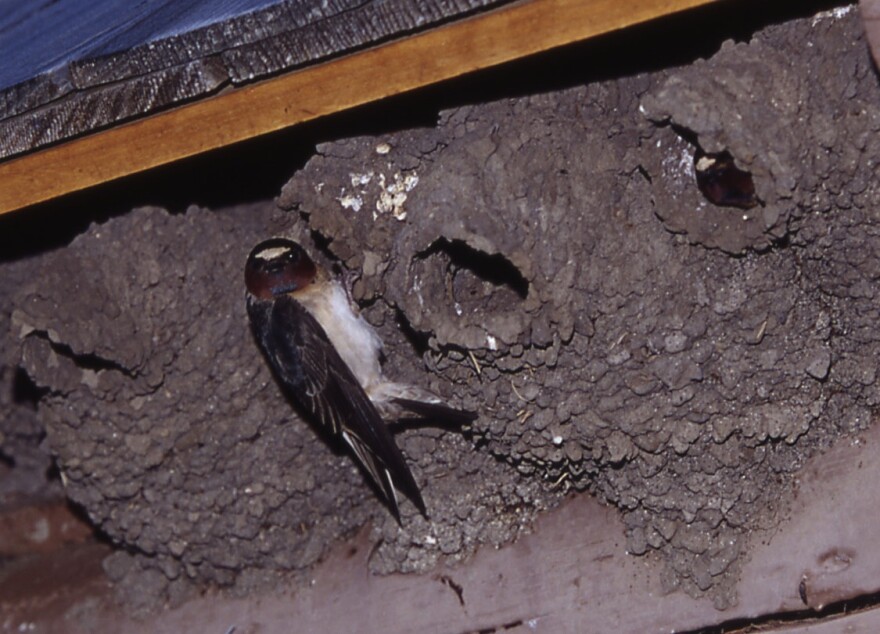As cliff swallows return to the Colorado Plateau this spring, they set about building mud nests on cliffs – or, just as often, on manmade structures like bridge abutments or under wide eaves. That takes a lot of work—more than a thousand beakfuls of mud for a new nest.
Cliff swallows live communally, and they’ll sometimes fast-track the nest-building process by stealing mud from neighbors or laying an egg or two in a nearby nest.
This leads to high-speed chases that have caught the attention of biologists and engineers alike. Placing multiple video cameras on a bridge in North Carolina where cliff swallows nest, researchers have for the first time tracked the birds’ aerial maneuvers in high-resolution, three-dimensional imagery.
Their footage reveals that a pursuing bird often copies the motions of the lead bird wingbeat for wingbeat—the result of a response circuit from eye to brain to muscles that takes just 81 milliseconds. The lead bird sometimes flies directly toward a concrete wall, then peels away at the last moment to shake off his pursuer.
Such high-speed, sharp turns exert tremendous g-force—beyond the level at which human pilots would likely pass out. By studying the split-second maneuvering of cliff swallows, researchers hope to design better navigation systems for air vehicles, particularly small drones.
Cliff swallows are one of several swallow species that nest here in the Southwest. Dawn and dusk are the best times to watch their aerial feats as they catch insects and fend off competitors.
Earth Notes is produced by KNAU and the Sustainable Communities Program at Northern Arizona University.


